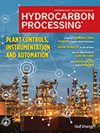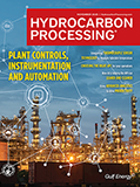Environment
Axens launches Jetanol brand for its alcohol-to-jet fuel technology
Axens announced the launch of the Jetanol™ brand for its Alcohol-to-Jet technology.
Neste to supply sustainable aviation fuel to Wizz Air
Neste will provide Wizz Air with 36,000 tpy of Neste-produced sustainable aviation fuel over a period of three years for the airline to use across its route network in Europe and the UK.
Copenhagen Infrastructure Partners acquires Envo Biogas project in Tønder, Denmark
Copenhagen Infrastructure Partners has acquired the biogas project Envo Biogas in Tønder, Denmark from Anaergia. The project will produce green gas/fuels from organic waste.
Bell Textron completes first helicopter flight using SAF
Bell Textron has completed its first flight fueled solely by 100% sustainable aviation fuel (SAF) with its Bell 505 becoming the first-ever single engine helicopter to fly using 100% SAF.
United Airlines launches $100-MM SAF investment fund
United Airlines launched a more than $100 MM investment fund to support start-ups focused on the research and production of sustainable aviation fuel (SAF).
KBR launches SAF technology in alliance with Swedish Biofuels
KBR announced that it has launched sustainable aviation fuel (SAF) technology in alliance with Swedish Biofuels AB.
Sasol and Topsoe create JV to develop sustainable aviation fuel
Sasol and Topsoe have signed a Memorandum of Understanding (MoU) with the intent to establish a 50/50 JV in 2023 to develop sustainable aviation fuel solutions.
Cepsa to supply green ammonia to Rotterdam port
Spain's Cepsa signed a deal with three Dutch companies to supply green ammonia to a terminal in the port of Rotterdam.
U.S. Senator is trying to keep EVs out of U.S. biofuels program
Republican U.S. Senator Mike Lee of Utah is trying to rally colleagues to sign a letter opposing the Biden administration’s plan to include electric vehicles in the nation’s renewable fuel program.
BB5 launch complements CPC Pumps International API 610 range
CPC International announced the launch of its new BB5 pump.

- UPM unlocks new bio-based markets as Leuna biorefinery produces its first commercial product 12/19
- Stamicarbon awarded technology licensing contract for new urea plant in Eastern China 12/19
- Ford takes $19.5-B writedown on EV business 12/19
- Babcock & Wilcox awarded $40-MM contract for advanced wet gas scrubbing technology at Canadian petroleum refinery 12/19
- Aarti Industries secures methanol and toluene feedstock supply through multiple long-term contracts 12/19
- bp picks first outsider CEO Meg O'Neill after abrupt Auchincloss exit 12/19




